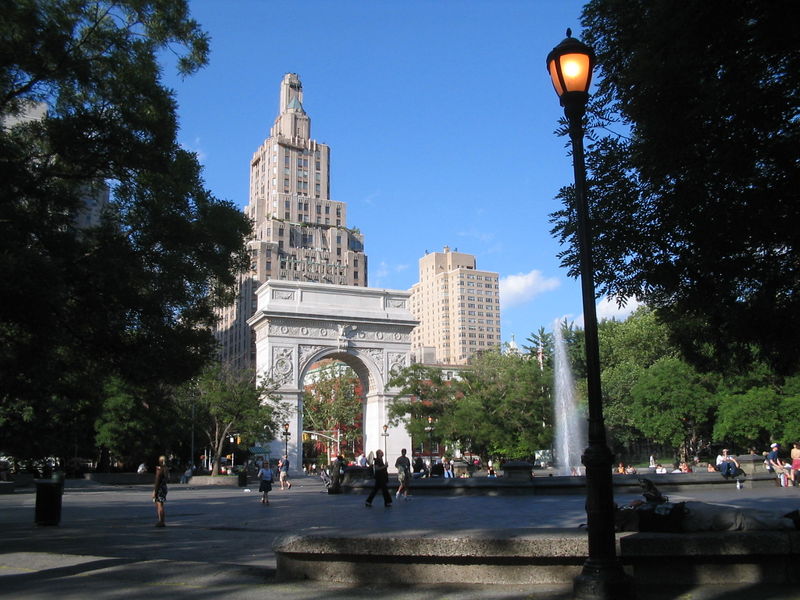Greenwich Village
From The Peopling of NYC
Greenwich Village, the world's Bohemia, is a rainbow blur of colors, a rush of silver creativity, still maintaining its late nineteen-sixties counter-culture personality. Tourists snapping photos with their new chrome digital cameras, students rushing, bags slung over their shoulders and large lattes and cell phones in their hands, locals looking laboriously through bright green peppers at the grocery store and ever-paparazzied celebrities shopping, all walk the same streets. What have these streets seen; what have they felt, as each year faded into New York’s horizon, another strip of fuchsia in the navy sky? Did the Beat Generation shake them with its reviving pulse? Did the riots leave them feeling raw and alive? Have they witnessed the same story being written generation after generation, a sense of pride swelling in their cemented hearts?
For the past forty years, Greenwich Village has remained the center of counter-culture. It is still a warm and welcoming home for radicals and liberals and those who wish to make their political statements. Anti-war signs can be found everywhere in Greenwich Village, from behind gray windows and sloppily stuck onto stop signs and sold at vendors at each corner. These sentiments were first insurgently echoed by the members of the Beat Generation, perhaps most famous among them Allen Ginsberg and Jack Kerouac, authors of Howl and One the Road respectively, who criticized what their generation had become, perhaps most startlingly reverberating in the first line of Ginsberg’s Howl, “I saw the best minds of my generation destroyed by madness, starving hysterical naked[.]" Greenwich Village was home to many protests, parades and public demonstrations including the Stonewall Riots. It was also home to many famous personas such as Edgar Allen Poe, Edna St. Vincent Millay, Ted Berrigan, Eugene O'Neill, Margaret Sanger and Thomas Paine. Because of NYU's presence, Greenwich Village has also become a transient location, the rents are often high and unstable, and many families do not live there. NYU has greatly affected the Village; the university relocated in the 1970s from its outer-city location and has since been a great part of Greenwich Village.
Perhaps, Greenwich Village was where these minds could once again come alive. And still it remains today, a place for students, quasi-hippies, artists, intellectuals and tourists. Greenwich Village, the quintessential example of New York City, remains vibrant, alive, its passionate pulse running through the streets.
Contributors: Joseph Essrog, Bracha Goykadosh, Astra Noel, William Sudry, Leah Traube
